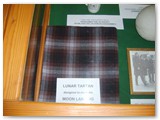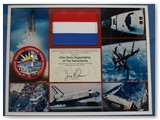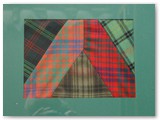Armstrong's Lantern: Spaceflight Scottish Connections
by Todd Wilkinson
Tradition tells us that the full moon was known in Scotland as “Macfarlane’s Lantern”, in reference to Clan Macfarlane’s skills as cattle rustlers. However in July, 1969, another well-known reiving family temporarily claimed the “lantern” by landing a man on it: the Armstrongs.
As with many other areas of society, the Scots have left their mark on manned spaceflight since its beginnings in the 1960s. The following article will hopefully pay a fitting tribute to that legacy of those descendants of Highlanders and border reivers who “slipped the surly bonds of earth” to explore outer space.
Neil Armstrong
On March 11, 1972, the “muckle toon” of Langholm, in Dumfriesshire, Scotland, received a visit that was almost “out of this world”, to use a very worn-out cliché, from Neil Armstrong, the first man to set foot on the lunar surface. Armstrong had been invited to Langholm by the town’s clerk, Eddie Armstrong, so he could be made the town’s first and only freeman, according to a 2009 article from the BBC’s web site.
Eddie Armstrong’s Depute, Grace Brown, noted that they did not expect Armstrong to accept their invitation, but he did just that, arriving by Rolls-Royce in a “bunting decked town square” with his wife, Janet. A pipe band (appropriately clad in Armstrong tartan) and local constables then escorted Armstrong to the Old Parish Church of Langholm, where he was presented with a calf vellum burgess ticket, housed inside a walnut casket in the shape of the noted border reiver Johnnie Armstrong’s stronghold Gilnockie Tower. Armstrong took an oath of allegiance as an honorary burgess, and noted that he considered Langholm to be his home town.
“My pleasure is not only that this is the land of Johnnie Armstrong, rather that my pleasure is knowing that this is my home town and in the genuine feeling that I have among the hills, these people,” said Armstrong.
Provost James Grieve remarked during the ceremony that a 400-year old law still stood on the books in Langholm that required him to hang anyone with the surname Armstrong, but while the Armstrongs of 400 years ago were “not the most favored of families”, they were “always men of spirit, currying favor in no quarter, doughty and determined.” Armstrong responded (behind a smile) that after reading the local history, he always felt the Armstrongs were “misrepresented”, to which one accounts noted that Armstrong “loved every one of the last ancestral scoundrels.”
While at Langholm, Janet Armstrong was presented with a mohair stole in the Lunar Tartan (ITI #5513), which had been designed two years before by Ian Maxwell, a director of the local Esk Valley Knitwear in Langholm. According to the tartan’s entry in the International Tartan Index, “the black, brown and grey were from the lunar rock brought back to earth by the Apollo missions, and the red was for the rocket flame.” Maxwell noted in 2009 that the tartan was very popular and was sold in Harrods, the Scotch House and that “many hundreds of kilts and ties were made in it.”
Numerous claims may be found on the Internet that Armstrong carried a swatch of Armstrong tartan with him on the Apollo 11 mission, yet no authoritative source can confirm this – yet there are other examples of tartan traveling to outer space.
A contemporary film clip of Armstrong’s visit can be viewed on the Scottish Screen Archive’s web site.
Alan Bean
In November, 1969, a 37-year old US Naval aviator and astronaut named Alan Bean was part of the crew of Apollo 12. Bean, who like Armstrong, was aware of his Scottish heritage, carried a large swatch of the MacBean tartan with him to the moon. An article from the September, 1969 Clan Chattan Journal, written by Hughston McBain of McBain, told of Bean’s flight to the moon on Apollo 12, and that Bean “has agreed to take a half yard of MacBean tartan with him, leave half of it on the moon as a flag, and bring back the other half for deposit in our archives.”
The tartan, the article claims, was purchased in Victoria, British Columbia by a society officer, noting that the sales clerk asked, “Are you going to claim the Moon for Scotland?” The response was “By no means – we are going to claim it for the MacBeans!”
Much like Armstrong, there are a number of claims found across the Internet that Bean left the tartan on the moon, which is simply not true.
In a note to the editor of the Alan Bean Gallery web site date April 30, 2005, Bean stated:
As I remember it, I took the Clan MacBean Tartan to the moon and returned it to Earth. I did not leave any of the Clan MacBean Tartan on the surface. I did, in fact, give a piece of the tartan to the Clan MacBean and also to the St. Bean Chapel in Scotland. And I’ve still got some of it in my possession. I did not, however, leave any of it on the moon.
Bean confirmed this to this author in a phone interview in May, 2008, stating that “One plaid material, 14 x 14 inches” was kept in his Personal Preference Kit (PPK) #1068 in the Command Module (CM), and then transferred over to the Lunar Excursion Module (LEM). Bean noted that the tartan was not taken out onto the lunar surface during the 33 hour Extravehicular Activity (EVA).
After returning to Earth, Bean presented a piece of tartan to then Hughston McBain of McBain, the Chief of the Clan MacBean, and another piece to St. Bean’s Church, which is located in the village of Fowlis Wester in Strathearn, Scotland.
Ironically, the tartan carried by Bean on Apollo 12 apparently was no longer the official clan tartan, according to the late tartan scholar James Scarlett. “When the later Hughston McBain [was] matriculated as Chief, he adopted a minor variation on this [the MacBean tartan]. I have a note that the piece of the MacBean tartan that went to the moon was of the old, no longer official, pattern.””
A small portion of the tartan was attached to one of Bean’s paintings, Clan MacBean Arrives on the Moon, which was presented to the Clan MacBean Society’s annual gathering in Wichita, Kansas in September, 1996 by Bean. Bean, wearing a glengarry in the MacBean tartan, was made an official honorary member at the gathering, and presented a program on the Apollo 12 mission.
In 2011, Bean sent a swatch of tartan to the Scottish Tartans Authority with the following note:
“To the Scottish Tartans Authority. This piece of MacBeantartan was flown to the moon in our Apollo 12 Command Module ‘Yankee Clipper.’ It was then transferred to our lunar module ‘Intrepid’ and was landed on the moon, November 1969. I am entrusting this valuable piece of tartan history to your care. (Signed) Alan Bean, Lunar Module Pilot.”
Jerry Ross
Bean wasn’t the only astronaut to carry tartan into space; in 1995, Colonel Jerry Ross carried five swatches of Ross tartans with him onboard the Space Shuttle Atlantis during the STS-74 mission. During that mission, Atlantis flew 3.4 million miles and completed 129 earth orbits, as well as rendezvousing and docking with the Russian space station Mir. Portions of the tartans were presented to Clan Ross societies in the USA, Canada, The Netherlands, Australia, New Zealand, the Tain & District and Clan Ross Museums, as well as to David Ross of Ross, the Chief of the Clan. Just as with the MacBean tartan on Apollo 12, the Ross tartans were also stowed and were inaccessible while STS-74 was in orbit.
“I was already a member of the Clan Ross Association of America and was starting to plan my first visit to Scotland. I thought it would be neat to fly the tartans and then make presentation items to give to the Chief, to the various Clan Ross associations around the globe, and to my family,” said Ross, in an e-mail interview with the author.
Much like the story of Armstrong’s tartan aboard Apollo 11, another story concerning an earlier flight by Ross in 1991, which can be found on a number of sites and at least one book, states that Ross wore a piece of the Clan Ross tartan on his flight suit. Ross noted while it didn’t happen, it would have been a “good idea if I could have convinced NASA to let me do it.”
Besides Ross, 4 of the 5 crewmembers of STS-74 were of Scottish heritage. “I don’t remember if any of the others carried any items from their Scottish ancestries, “stated Ross. “While we were on-orbit looking out the windows and enjoying the views of the earth, we did talk about the fact that four of us had Scottish heritage.” One crew member, Colonel William McArthur, received an honorary doctorate in May 2009 from the University of Strathclyde in Glasgow for his work with the Scottish Space School. A photo from the University of Strathclyde’s press release on the occasion shows McArthur wearing Highland formal attire under his academic regalia.
Laurel Clark
While not necessarily tartan-related, mention should also be made of Mission Specialist Laurel Clark, who was killed in the Space Shuttle Columbia disaster in 2003. Clark, a Naval Doctor, was stationed at the US Navy submarine base at Holy Loch, Scotland with Submarine Squadron (SUBRON 14). It was SUBRON 14’s commander, Captain Walter F Schlech, who commissioned Alexander MacIntyre of Strone, Argyll in the 1960s to design a tartan for US Navy personnel at Holy Loch.
The Polaris (Military) tartan (ITI #222) is worn today by the Pipes and Drums of the US Naval Academy.
Clark, according to a number of accounts, was very proud of her Scottish heritage, and a piper played at her wedding to a fellow naval officer she had met at Holy Loch. On the morning before the tragic accident, Mission Control used Scotland the Brave as the wakeup call for Columbia in honor of Clark. The well-known pipe tune was also played at her funeral, along with Amazing Grace at Arlington National Cemetery.
Robert Burns?
Besides tartan, a copy of the works of Robert Burns has also flown in Space. In November, 2009 British astronaut Nick Patrick was given a miniature copy of the works of Burns by students from the Scottish Space School at the University of Strathclyde who were visiting the Johnson Space Center in Houston, Texas. Patrick carried the wee book (along with a fragment of Jean Armour’s wedding dress) with him aboard the Space Shuttle Endeavor in February, 2010 as part of a two-week mission to the International Space Station. Patrick gave the book to First Minister Alex Salmond at Holyrood in June 2010. The book is now on display at the Burns Museum in Alloway.
The author would especially to thank Captain Alan Bean, Eric Jones, Colonel Jerry Ross, George Ross of the Clan Ross (Netherlands) and Charles Ross, President of the Clan Ross Society USA for their assistance in writing this article.



Bibliography
Bean, Alan. Phone interview. 12 May 2008.
Alan Bean Gallery web site. “Clan MacBean Arrives on the Moon”. Accessed May 12, 2008. http://www.alanbeangallery.com/macbean-story.html
Bean, Earl H., and Annette Bean. “Wichita — Perfect.” Clan MacBean in North America Register (1996): 1-2. Accessed July 14, 2011. http://www.clanmacbean.net/register/archived/1996_03.pdf
Bonfante, Jordan. “Neil Armstrong’s kinsman was hanged as a Thief.” Life, March 24, 1972, 65.
Clan MacBean in North America, Inc. “Clan MacBean Tartan.” Accessed July 14, 2011. http://www.clanmacbean.net/old/more.html
—. “Clan MacBean’s Moon Tartan”. Accessed May 12, 2008. http://www.clanmacbean.net/moon.html
Hansen, James R. First Man: The Life of Neil A. Armstrong. New York: Simon & Schuster, 2005.
Harris, Colin. “Burns Space Odyssey.” The RBANA Tattler (2011) Accessed July 14, 2011. http://rbana.com/Tattler%20Feb%202011.pdf
Hicklin, Aaron. “‘To have this happen was unbearable’ Families and friends gather to commemorate their dead.” The Herald, February 3, 2003. Accessed July 18, 2011. http://www.heraldscotland.com/sport/spl/aberdeen/to-have-this-happen-was-unbearable-families-and-fri
Johnston, Willie. “Recalling Moon man’s ‘muckle’ leap .” BBC Scotland News. Accessed July 14, 2011. http://news.bbc.co.uk/2/hi/uk_news/scotland/8158762.stm
Liptrott, Sharon. “Armstrong lands home at Langholm.” Dumfries and Galloway Standard, July 24, 2009. http://www.dgstandard.co.uk/dumfries-news/local-news-dumfries/local-news-annandale-eskdale/2009/07/2
Mussenden, Sean. “Astronaut Joins Nation’s Heroes.” Orlando Sentinel, March 11, 2003. Accessed July 18, 2011.http://articles.orlandosentinel.com/2003-03-11/news/0303110086_1_jon-clark-laurel-clark-arlington-national
Ross, George, and David Ross. “Ross tartans in space.” Clan Ross (Netherlands). Accessed July 14, 2011. http://www.clan-ross.nl/ross-tartans-in-space/ross-tartans-in-space.htm#top
Ross, Jerry. E-mail to the author. August 2, 2011.
Ross, Peter. “Touch the sky: 40 years of space travel.” The Scotsman, June 7, 2009. Accessed July 14, 2011. http://news.scotsman.com/spacescience/Touch-the-sky-40-years.5339534.jp
The Scottish American History Club Newsletter. “Laurel Blair Salton Clark, M.D., USN.” Accessed July 18, 2011. http://chicagoscots.net/HC%20Newsletters/2004%20April.htm
University of Strathclyde. “Astronaut lands in Strathclyde to receive honorary degree”. Accessed August 5, 2011. http://www.strath.ac.uk/features/archive/universityday/
University of Strathclyde Engineering. “Burns in Space.” Accessed July 14, 2011. http://www.strath.ac.uk/eee/undergraduatecourses/admissionsevents/outreachactivitiesforschoolpupils/
Wilson, Stuart. “Book of Burns poetry orbits the world.” Ayrshire Post, July 9, 2010. Accessed July 14, 2011. http://www.ayrshirepost.net/ayrshire-news/local-news-ayrshire/ayr-news/2010/07/09/book-of-burns-poet

